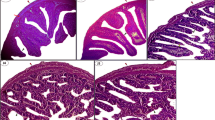Abstract
Despite the ecological importance of the White Stork, Ciconia ciconia, and its wide distribution in southern Europe, knowledge of the impact of long-term exposure to pollution in its wild populations is still scarce. As a first step towards contributing to addressing this question, the baseline values of anti-oxidant parameters and peroxidation levels were determined in wild White Storks, and possible differences related to age were investigated. Superoxide dismutase, catalase, glutathione peroxidase, glutathione reductase, glutathione S-transferase, total glutathione, reduced and oxidised glutathione ratio and lipid peroxidation were determined. Superoxide dismutase activity and the level of total glutathione were statistically higher in adult compared to juvenile storks. The reduced and oxidised glutathione ratio and the lipid peroxidation level followed also the same trend, although no significant differences were found between adults and juveniles. On the contrary, catalase and glutathione peroxidase showed low activities in adults when compared to juvenile storks. Finally, glutathione reductase and glutathione S-transferase activities were similar in two groups of birds studied. Thus, it can be concluded that the period of enzymatic activity in adolescence in wild White Storks is very important in forming the organism’s response to environmental stress.
Zusammenfassung
Antioxidantien-Abwehr und Lipidperoxidation bei freilebenden Weißstörchen ( Ciconia ciconia ) in Spanien
Trotz seiner ökologischen Bedeutung und weiten Verbreitung in Südeuropa weiss man nicht viel über die Auswirkungen von Langfrist-Belastungen durch Umweltverschmutzung auf freilebende Weißstorch-Populationen. Als ersten Schritt zur Untersuchung dieser Frage bestimmten wir die Normalwerte der Antioxidantien- und Peroxidations-Parameter in freilebenden Störchen und untersuchten mögliche altersabhängige Unterschiede. Konkret angeschaut wurden Superoxid Dismutase, Katalase, Glutathion-Peroxidase, Glutathion-Reduktase, Glutathion-S-Transferase, Gesamt-Glutathion, das Verhältnis von reduziertem zu oxidiertem Glutathion und Lipidperoxidation. Bei adulten Tieren lagen die Superoxid Dismutase-Aktivität sowie der Gesamt-Glutathion-Spiegel statistisch signifikant höher als bei Jungvögeln. Auch das Verhältnis von reduziertem zu oxidiertem Glutathion und die Lipidperoxidation zeigten diesen Trend, die Unterschiede zwischen adulten und jungen Tieren waren jedoch nicht signifikant. Im Gegensatz dazu zeigten Katalase und Glutathion-Peroxidase bei adulten Tieren geringere Aktivität als bei Jungstörchen. Glutathion-Reduktase und Glutathion-S-Transferase zeigten in beiden untersuchten Vogelgruppen ähnliche Aktivitäten. Aus diesen Ergebnissen kann geschlossen werden, dass für erwachsene, freilebende Weißstörche enzymatische Aktivitäten von großer Bedeutung für die Reaktion auf Umweltstress sind.
Similar content being viewed by others
References
Ahmad S (1995) Antioxidant mechanism of enzymes and proteins. In: Ahmad S (ed) Stress and Antioxidant Defences in Biology Oxidative. Chapman & Hall, New York, pp 238–272
Alonso JA, Alonso JC, San Segundo C (1992) Selección de hábitat en las cigüeñas blanca y negra. In: Informe elaborado para el Ministerio de Medio Ambiente Pesca y Alimentación, Madrid
Arzu Bozkaya LA, Öztürk-Ürek R, Aydemir T, Tarhan L (2001) Effects of Se Cu and Se+ vitamina E deficiency on the activities of CuZnSOD, GSH-Px, CAT and LPO levels in chicken erythrocytes. Cell Biochem Funct 19:153–157
Baker MA, Cerniglia GJ, Zaman A (1990) Microtiter plate assay for the measurement of glutathione and glutathione disulfide in large numbers of biological samples. Anal Biochem 190:360–365
Beckman KB, Ames BN (1998) The free radical theory of aging matures. Physiol Rev 78:547–581
Bird RP, Draper AH (1984) Comparative studies on different methods of malondialdehyde determination. Method Enzymol 90:105–110
Blázquez E, Aguirre JI, Martínez-Haro M, Mateo R, Jiménez B (2006) The use of white stork (Ciconia ciconia) nestlings in a biomonitoring programme for organochlorines through the region of Madrid (Spain). Organohalogen Compd 68:2081–2084
Bradford M (1976) A rapid and sensitive method for the quantification of microgram quantities of protein utilising the principle of protein binding. Anal Biochem 72:248
Chiu D, Kuypers F, Lubin B (1989) Lipid peroxidation in human red cells. Semin Hematol 26:257–276
Clairborne A (1985) Catalase activity. In: Greenwald RA (ed) Handbook of Methods in Oxygen Radical Research. CRC, Boca Raton, pp 283–284
Cribb AE, Leeder JS, Spielberg SP (1989) Use of a microplate reader in an assay of glutathione reductase using 55-dithiobis(2-nitrobenzoic acid). Anal Biochem 183:195–196
Flohé L, Otting F (1984) Superoxide dismutase assays. Method Enzymol 105:93–104
Fung LWM, Zhang Y (1990) A method to evaluate the antioxidant system for radicals in erythrocyte menbrance. Free Radical Bio Med 9:289–298
Galvani P, Cassani A, Fumagalli P, Santagostino A (2000) Effect of Paraquat on Glutathione Activity in Japanese Quail. Bull Environ Contam Toxicol 64:74–80
Gomi F, Matsuo M (1998) Effects of aging and food restriction on the antioxidant enzyme activity of rat livers. J Gerontol A 53(3):161–167
Griffith OW (1980) Determination of glutathione and glutathione disulfide using glutathione reductase and 2-vinilpiridine. Anal Biochem 106:207–212
Guilhermino L, Lopes MC, Carvalho AP, Soares AM (1996) Acetylcholinesterase activity in juveniles of Daphnia magna Straus. Bull Environ Contam Tox 57(6):979–985
Guimarães L, Gravato C, Santos J, Monteiro LS, Guilhermino L (2009) Yellow eel (Anguilla anguilla) development in NW Portuguese estuaries with different contamination levels. Ecotoxicology 18(4):385–402
Habig WH, Pabst MJ, Jakoby WB (1974) Glutathione-S-transferases the first enzymatic step in mercapturic acid formation. J Biol Chem 249:7130–7139
Hirota M, Inoune M, Ando Y (1989) Inhibition of stress-induced gastric injury in the rat by glutathione. Gastroenterology 97:853–859
Hulbert AJ, Rana T, Couture P (2002) The acyl composition of mammalian phospholipids: an allometric analysis. Comp Biochem Physiol B 132:515–527
Humphries KM, Szweda PA, Szweda LI (2006) Aging: a shift from redox regulation to oxidative damage. Free Radical Res 40:1239–1243
Isaksson C, Örnborg J, Stephensen E, Andersson S (2005) Plasma glutathione and carotenoid coloration as potential biomarkers of environmental stress in great tits. EcoHealth 2:138–146
Kamiński P, Kurhalyuk N, Jerzak L, Kasprzak M, Tkachenko H, Klawe JJ, Szady-Grad M, Koim B, Wiśniewska E (2009) Ecophysiological determinations of antioxidant enzymes and lipoperoxidation in the blood of White Stork, Ciconia ciconia, from Poland. Environ Res 109:29–39
Kregel KC, Zhang HJ (2007) An integrated view of oxidative stress in aging: basic mechanisms functional effects and pathological considerations. Am J Physiol Regul Integr Comp Physiol 292:18–36
Leaver MJ, George SG (1998) A piscine glutathione S-transferase which efficiently conjugates the end-products of lipid peroxidation. Mar Environ Res 46:71–74
Leffler JE (1993) An Introduction to Free Radicals. Wiley, New York
Lew H, Pyke S, Quintanilha A (1985) Changes in the glutathione status of plasma liver and skeletal muscle following exhaustive exercise in rats. FEBS Lett 185:262–266
López Barea J (2000) Biomarcadores moleculares de estrés oxidativo y contaminación ambiental. Rev Toxicol 17(1):12–18
López-Antia A, Ortiz-Santaliestra ME, Mougeot F, Mateo R (2012) Experimental exposure of red-legged partridges (Alectoris rufa) to seeds coated with imidacloprid, thiram and difenoconazole. Ecotoxicology. doi:10.1007/s10646-012-1009-x
Martin I, Grotewiel MS (2006) Oxidative damage and age-related functional declines. Mech Ageing Dev 127:411–423
Matsuo M, Gomi F, Dooley MM (1992) Age-related alterations in antioxidant capacity and lipid peroxidation in brain liver and lung homogenates of normal and vitamin E-deficient rats. Mech Ageing Dev 64(3):273–292
Mineau P (2005) A review and analysis of study endpoints relevant to the assessment of ‘‘long term’’ pesticide toxicity in avian and mammalian wildlife. Ecotoxicology 14:775–799
Mohandas J, Marshall JJ, Duggins GG, Horvath JS, Tiller D (1984) Differential distribution of glutathione and glutathione related enzymes in rabbit kidney: possible implications in analgesic neuropathy. Cancer Res 44:5086–5091
Molina B, del Moral JC (2005) La cigüeña blanca en España. VI Censo Internacional (2004). SEO/BirdLife, Madrid
Montesinos A, Sainz A, Pablos MV, Mazzucchelli F, Tesouro MA (1997) Hematological and plasma biochemical reference intervals in young white storks. J Wildlife Dis 33(3):405–412
Ohkawa H (1979) Assay for lipid peroxides in animal tissues by thiobarbituric acid reaction. Anal Biochem 95:351–358
Öztürk-Ürek R, Bozkaya LA, Tarhan L (2001) The effects of some antioxidant vitamin-and trace element- supplemented diets on activities of SOD CAT GSH-Px and LPO levels in chicken tissues. Cell Biochem Funct 19:125–132
Pena-Llopis S, Pena JB, Sancho E, Fernández-Vega C, Ferrando MD (2001) Glutathione-dependent resistente of the European eel, Anguilla Anguilla, to the herbicide molinate. Chemosphere 45:671–681
Pinowski J, Pinowska B, de Graaf R, Visser J, Dziurdzik B (1991) Influence of feeding habitat on prey capture rate and diet composition of White Stork, Ciconia ciconia (L). Zakl Ochrony Przyrody Za-sobow Nat Pol Akad Nauk 37:59–85
Porter NA, Caldwell SE, Mills KA, Porter NA, Caldwell SE, Mills KA (1995) Mechanisms of free radical oxidation of unsaturated lipids. Lipids 30:277–290
Real Decreto (2011) 139/2011 de 4 de febrero para el desarrollo del Listado de Especies Silvestres en Régimen de Protección Especial y del Catálogo Español de Especies Amenazadas. Madrid
Rizvi SI, Maurya PK (2007) Markers of oxidative stress in erythrocytes during aging in human. Ann NY Acad Sci 1100:373–382
Sies H (1993) Strategies of antioxidant defence. Eur J Biochem 215:213–219
Spiteller G (2001) Peroxidation of linoleic acid and its relation to aging and age dependent diseases. Mech Ageing Dev 122:617–657
Stegeman JJ, Brouwer M, Di Giulio RT, Förlin L, Fowler BA, Sanders BM, van Veld PA (1992) Molecular responses to environmental contamination: enzyme and protein systems as indicators of chemical exposure and effect. In: Hugget RJ, Kimerle RA, Mherle J, Bergman HL (eds) Biomarkers: biochemical physiological and histological markers of anthropogenic stress. Lewis, Boca Raton, pp 235–335
Šverko V, Sobočanec S, Balog T, Marotti T (2004) Age and gender differences in antioxidant enzyme activity: potential relationship to liver carcinogenesis in male mice. Biogerontology 5:235–242
Szabó Z, Beregi A, Vajdovich P, Abonyi-Tóth Z, Mátrai E, Pazár P, Gaál T (2010) Hematologic and plasma biochemistry values in white storks (Ciconia ciconia). J Zoo Wildl Med 41(1):17–21
Tietze F (1969) Enzymic method for quantitative determination of nanogram amounts of total and oxidized glutathione. Anal Biochem 27:502–522
Torres MA, Testa CP, Gáspari C, Masutti MB, Panitz CMN, Curi-Pedrosa R, Almeida EA, Di Mascio P, Wilhelm Filho D (2002) Oxidative stress in the mussel Mytella guyanensis from polluted mangroves on Santa Catarina Island Brazil. Mar Pollut Bull 44:923–932
Vleck CM, Haussmann MF, Vleck D (2007) Avian senescence: underlying mechanisms. J Ornithol 148(2):611–624
Wilhelm Filho DW, Tribess T, Gáspari C, Cláudio FD, Torres MA, Magalhaes ARM (2001) Seasonal changes in antioxidant defenses of the digestive gland of the brown mussel (Perna perna). Aquaculture 203(10):149–158
Winston GW, Di Giulio RT (1991) Prooxidant and antioxidant mechanisms in aquatic organisms. Aquat Toxicol 19:137–161
del Hoyo J, Elliott A, Sargatal J (1992) Ostrich to Ducks. Handbook of the Birds of the World. Lynx, Barcelona
Repetto M (1997) Factores que modifican la toxicidad. In: Diaz de Santos (ed) Toxicología Fundamental. Madrid, pp 245-258
Yang JG, Morrison-Plummer J, Burk RF (1987) Purification and quantitation of rat plasma selenoprotein distinct from glutathione peroxidase using monoclonal antibodies. J Biol Chem 262:13372–13375
Zar JH (1996) Biostatistical Analysis. Prentice Hall, New Jersey
Acknowledgments
This study was supported by Consejería de Economía, Comercio e Innovación de la Junta de Extremadura (Spain) and by EU (FEDER program). The assays complied with the current laws of Spain. Special thanks to the staff of “Los Hornos” Wildlife Rehabilitation Centre property of Consejería de Agricultura, Desarrollo Rural, Medio Ambiente y Energía (Gobierno de Extremadura, Spain).
Conflict of interest
The authors declare that they have no conflict of interest.
Author information
Authors and Affiliations
Corresponding author
Additional information
Communicated by K. C. Klasing.
Rights and permissions
About this article
Cite this article
Oropesa, AL., Gravato, C., Guilhermino, L. et al. Antioxidant defences and lipid peroxidation in wild White Storks, Ciconia ciconia, from Spain. J Ornithol 154, 971–976 (2013). https://doi.org/10.1007/s10336-013-0964-1
Received:
Revised:
Accepted:
Published:
Issue Date:
DOI: https://doi.org/10.1007/s10336-013-0964-1




